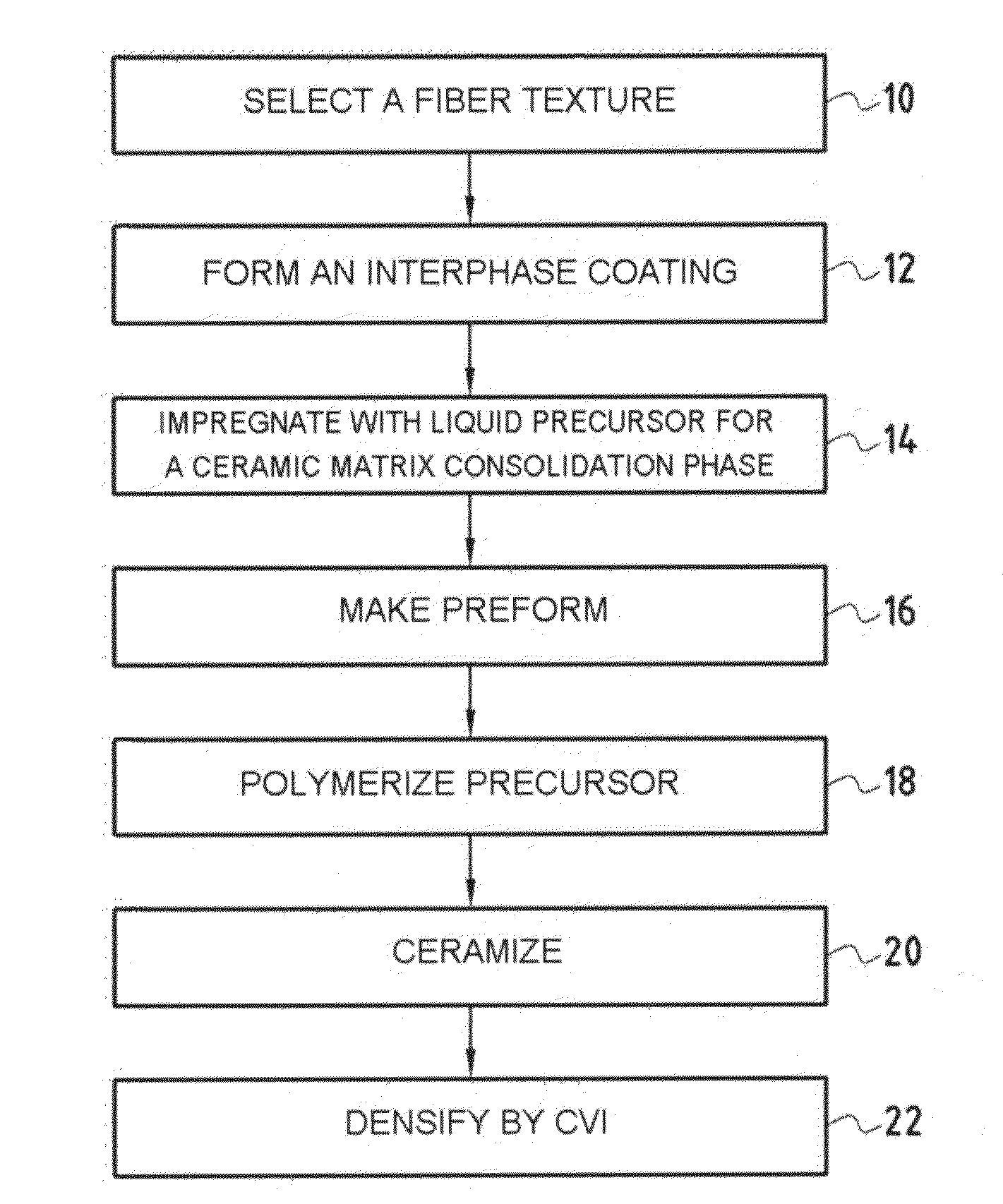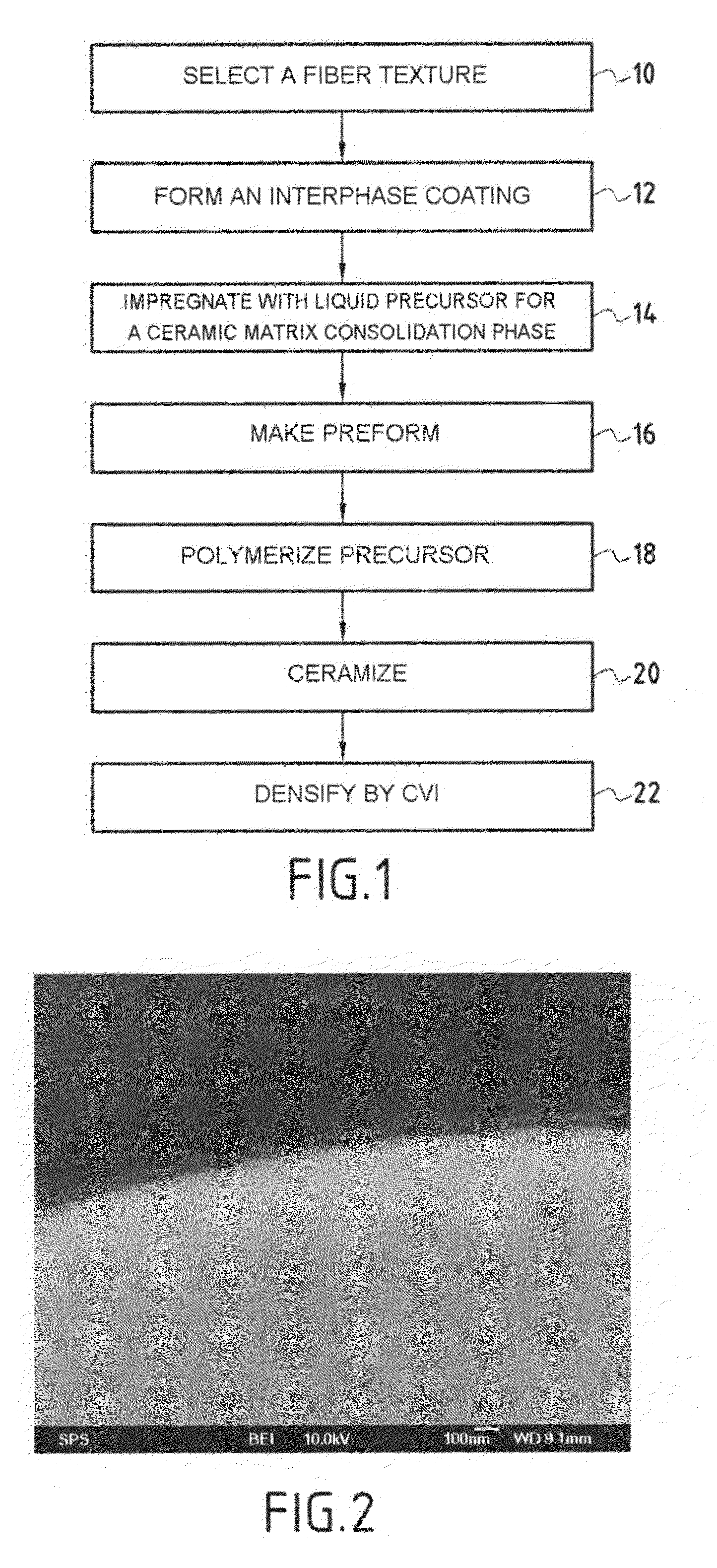Method for Making a Part of Composite Material with Ceramic Matrix and Resulting Part
a composite material and ceramic matrix technology, applied in the direction of ion implantation coating, chemical vapor deposition coating, magnetic recording, etc., can solve the problems of material fragility, lack of fiber-matrix bonding to the detriment of mechanical force resistance, and the technique cannot be implemented in the same manner with a liquid composition, so as to achieve less oxidation resistance, easy to work, and good deformation
- Summary
- Abstract
- Description
- Claims
- Application Information
AI Technical Summary
Benefits of technology
Problems solved by technology
Method used
Image
Examples
example 1
[0054]A fiber texture was used constituted by a multilayer woven fabric (30) of fiber yarns made essentially of SiC as supplied under the reference “Hi-Nicalon” by the Japanese supplier Nippon Carbon, the fibers being united by a polyvinyl alcohol (PVA) reaming filament. A BC / SiC interphase coating (inner layer of BC and outer layer of SiC) was formed on the fibers by a CVI process. The thickness of the interphase coating was about 50 nm, the BC and SiC layers being of substantially the same thickness. The microphotograph of FIG. 2 shows the interphase coating formed on an SiC fiber.
[0055]The fiber texture provided with the interphase coating was impregnated by being passed through a bath containing a polycarbosilazane resin, a precursor of SiC, in solution in xylene, and then drying, so as to leave on the fibers a quantity of resin constituting about 40% by weight relative to the weight of the texture provided with the interphase coating.
[0056]A ply of impregnated fiber texture was...
PUM
| Property | Measurement | Unit |
|---|---|---|
| thickness | aaaaa | aaaaa |
| temperatures | aaaaa | aaaaa |
| thickness | aaaaa | aaaaa |
Abstract
Description
Claims
Application Information
 Login to View More
Login to View More - R&D
- Intellectual Property
- Life Sciences
- Materials
- Tech Scout
- Unparalleled Data Quality
- Higher Quality Content
- 60% Fewer Hallucinations
Browse by: Latest US Patents, China's latest patents, Technical Efficacy Thesaurus, Application Domain, Technology Topic, Popular Technical Reports.
© 2025 PatSnap. All rights reserved.Legal|Privacy policy|Modern Slavery Act Transparency Statement|Sitemap|About US| Contact US: help@patsnap.com


